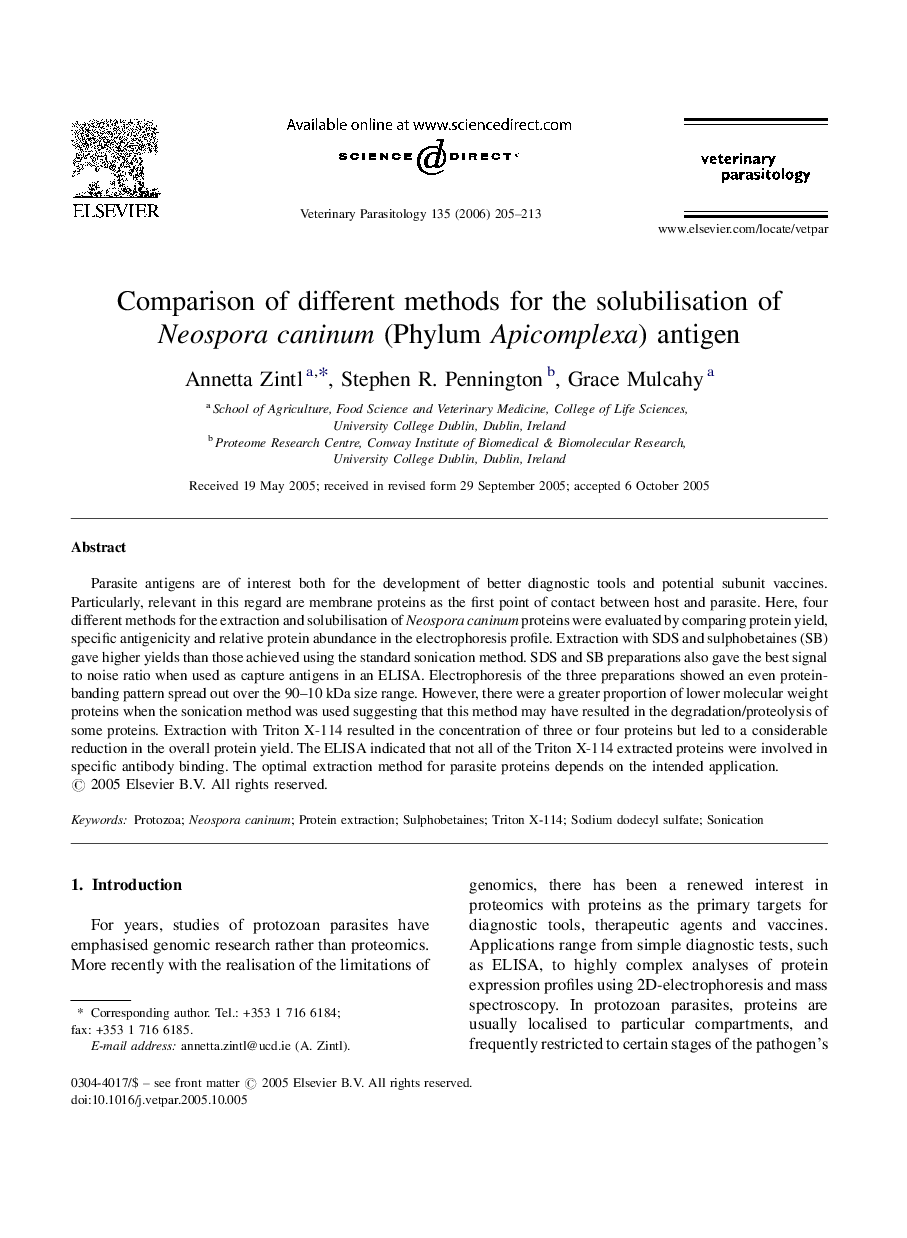| Article ID | Journal | Published Year | Pages | File Type |
|---|---|---|---|---|
| 2472710 | Veterinary Parasitology | 2006 | 9 Pages |
Parasite antigens are of interest both for the development of better diagnostic tools and potential subunit vaccines. Particularly, relevant in this regard are membrane proteins as the first point of contact between host and parasite. Here, four different methods for the extraction and solubilisation of Neospora caninum proteins were evaluated by comparing protein yield, specific antigenicity and relative protein abundance in the electrophoresis profile. Extraction with SDS and sulphobetaines (SB) gave higher yields than those achieved using the standard sonication method. SDS and SB preparations also gave the best signal to noise ratio when used as capture antigens in an ELISA. Electrophoresis of the three preparations showed an even protein-banding pattern spread out over the 90–10 kDa size range. However, there were a greater proportion of lower molecular weight proteins when the sonication method was used suggesting that this method may have resulted in the degradation/proteolysis of some proteins. Extraction with Triton X-114 resulted in the concentration of three or four proteins but led to a considerable reduction in the overall protein yield. The ELISA indicated that not all of the Triton X-114 extracted proteins were involved in specific antibody binding. The optimal extraction method for parasite proteins depends on the intended application.
